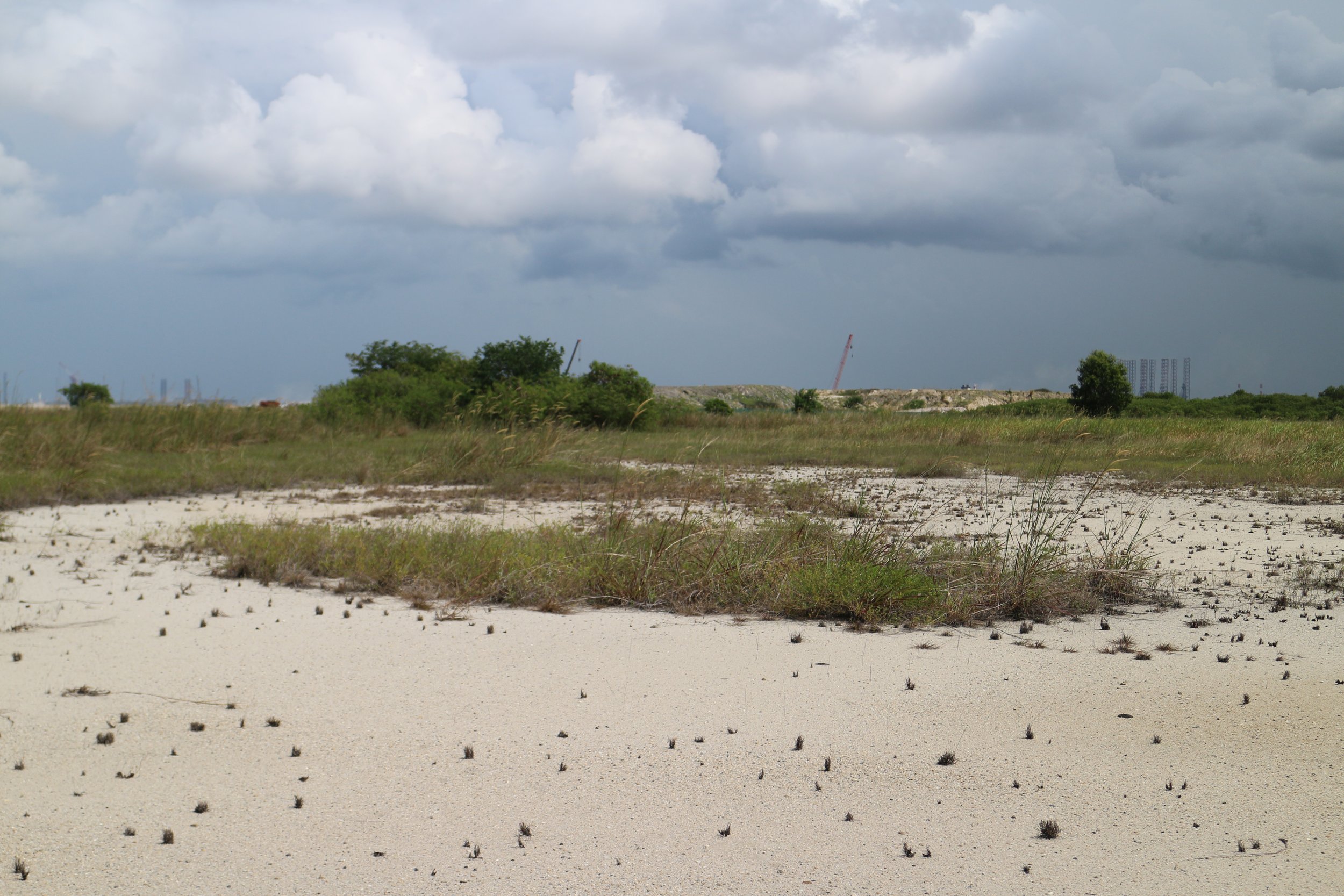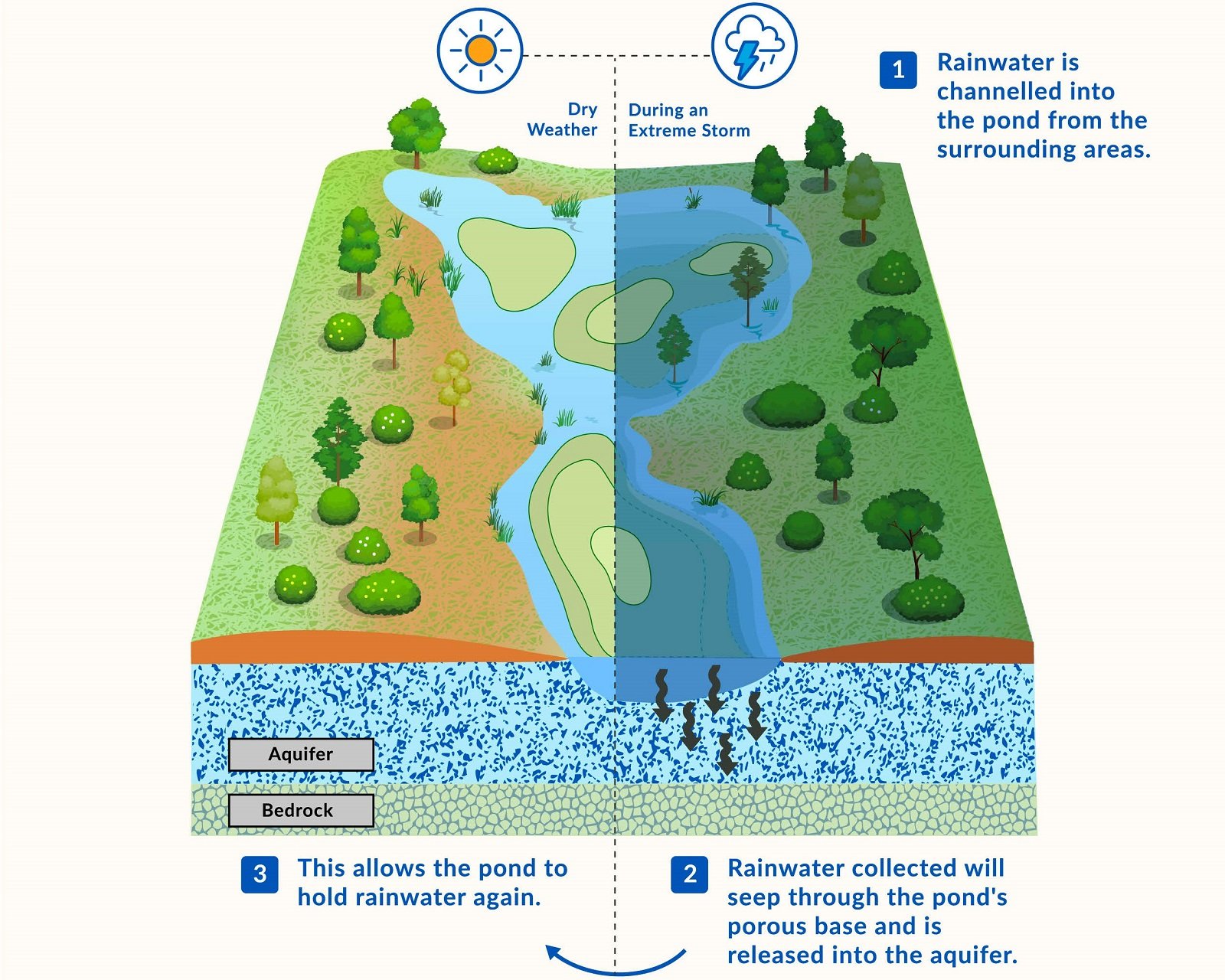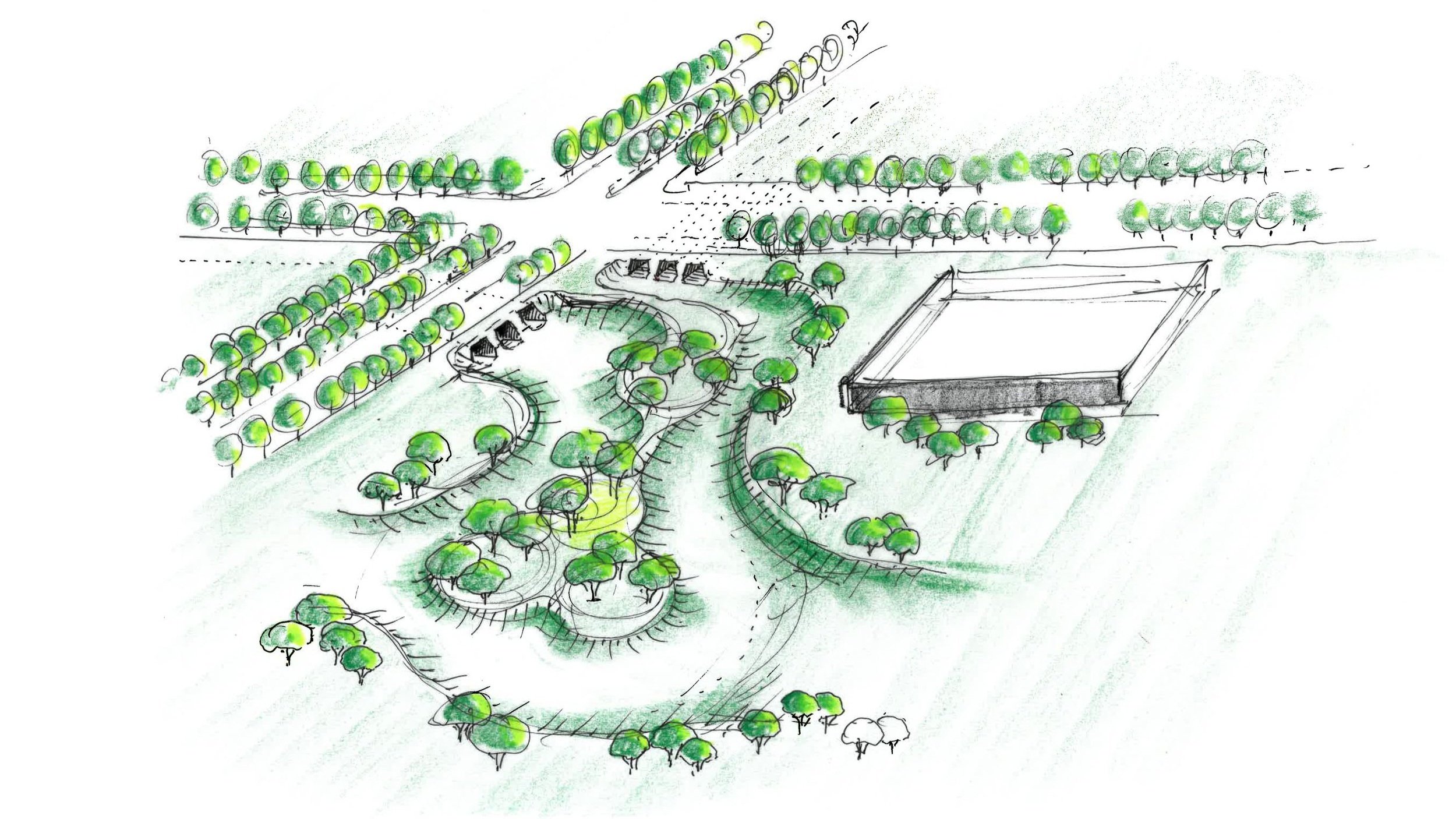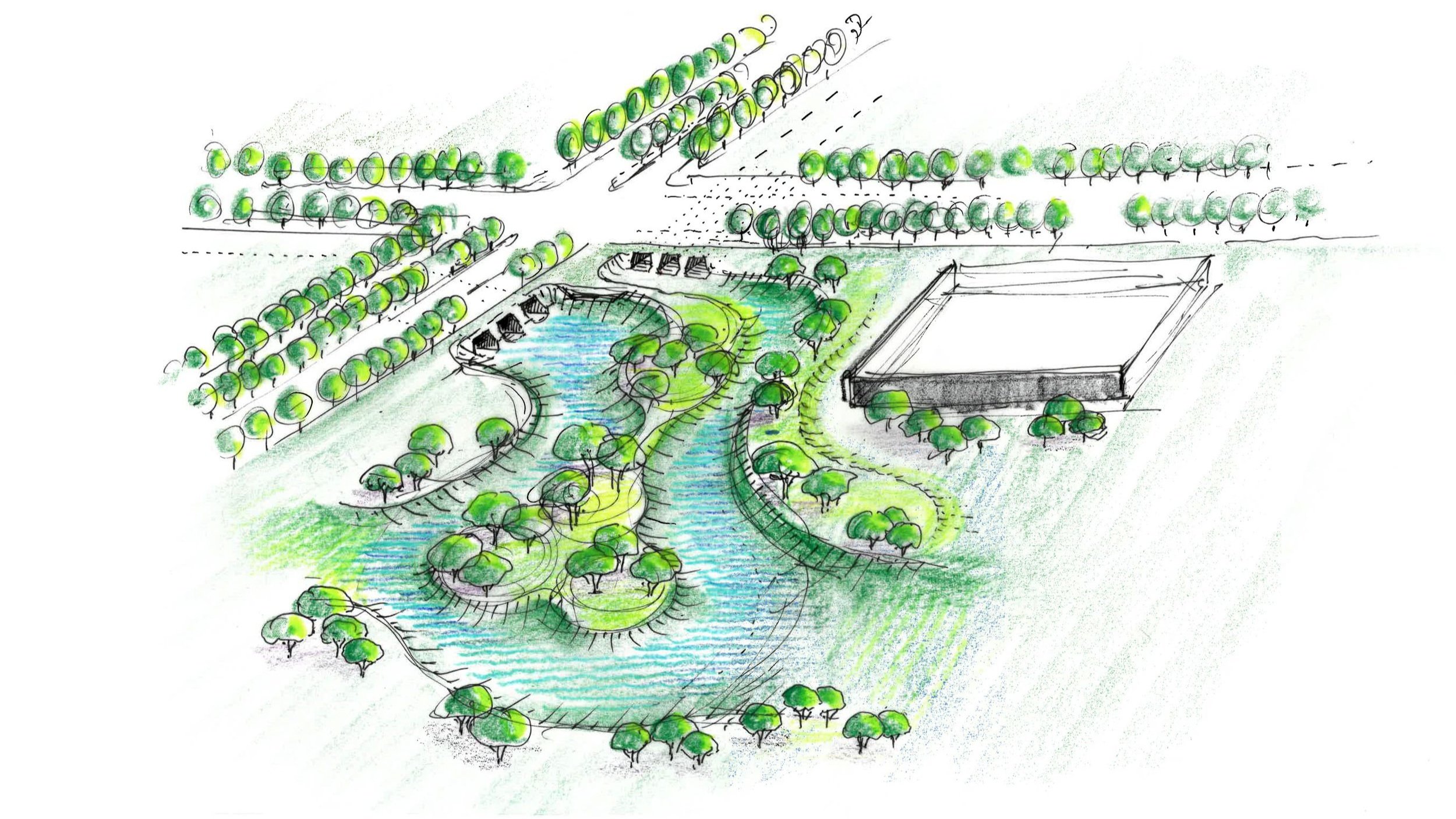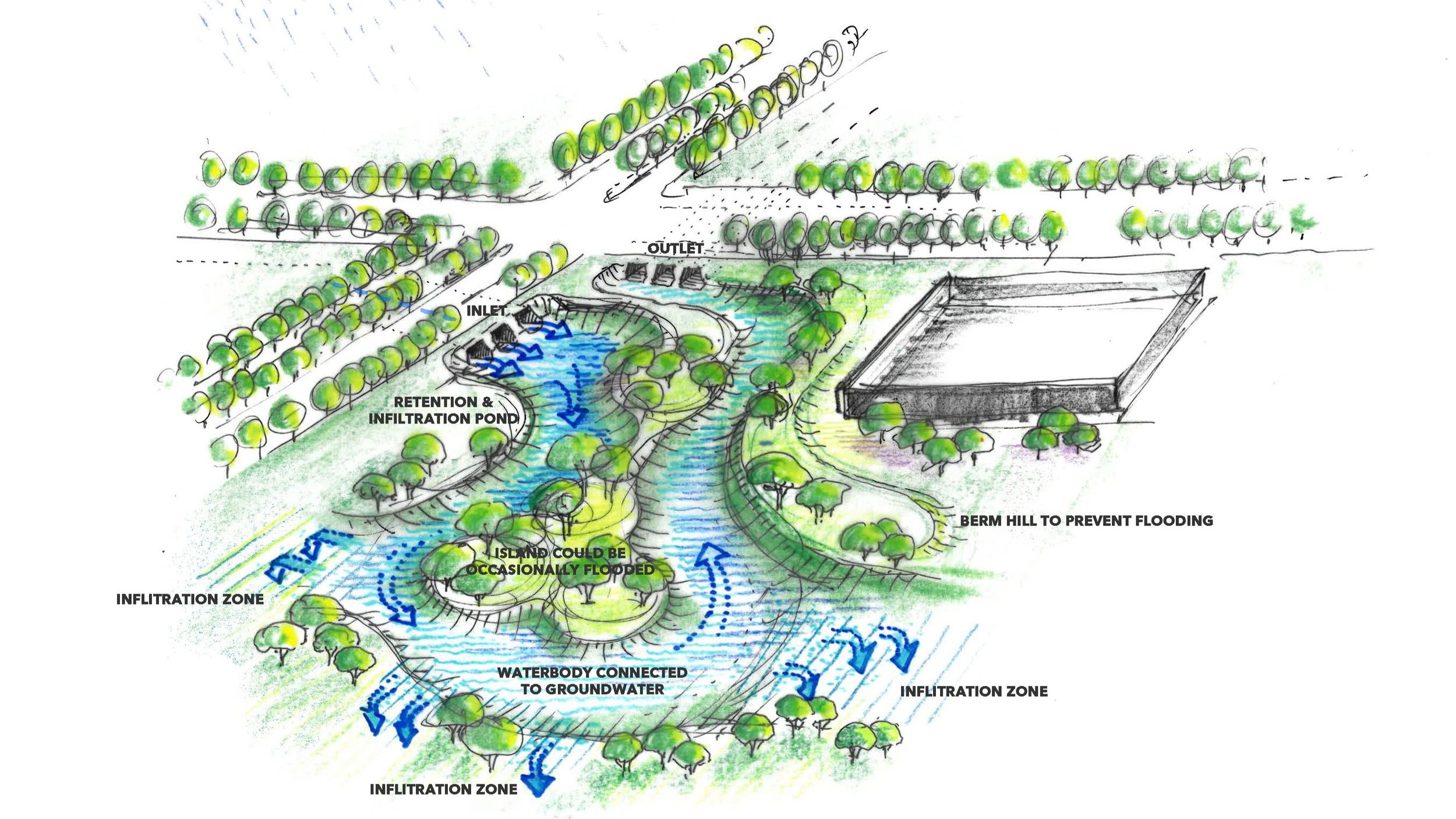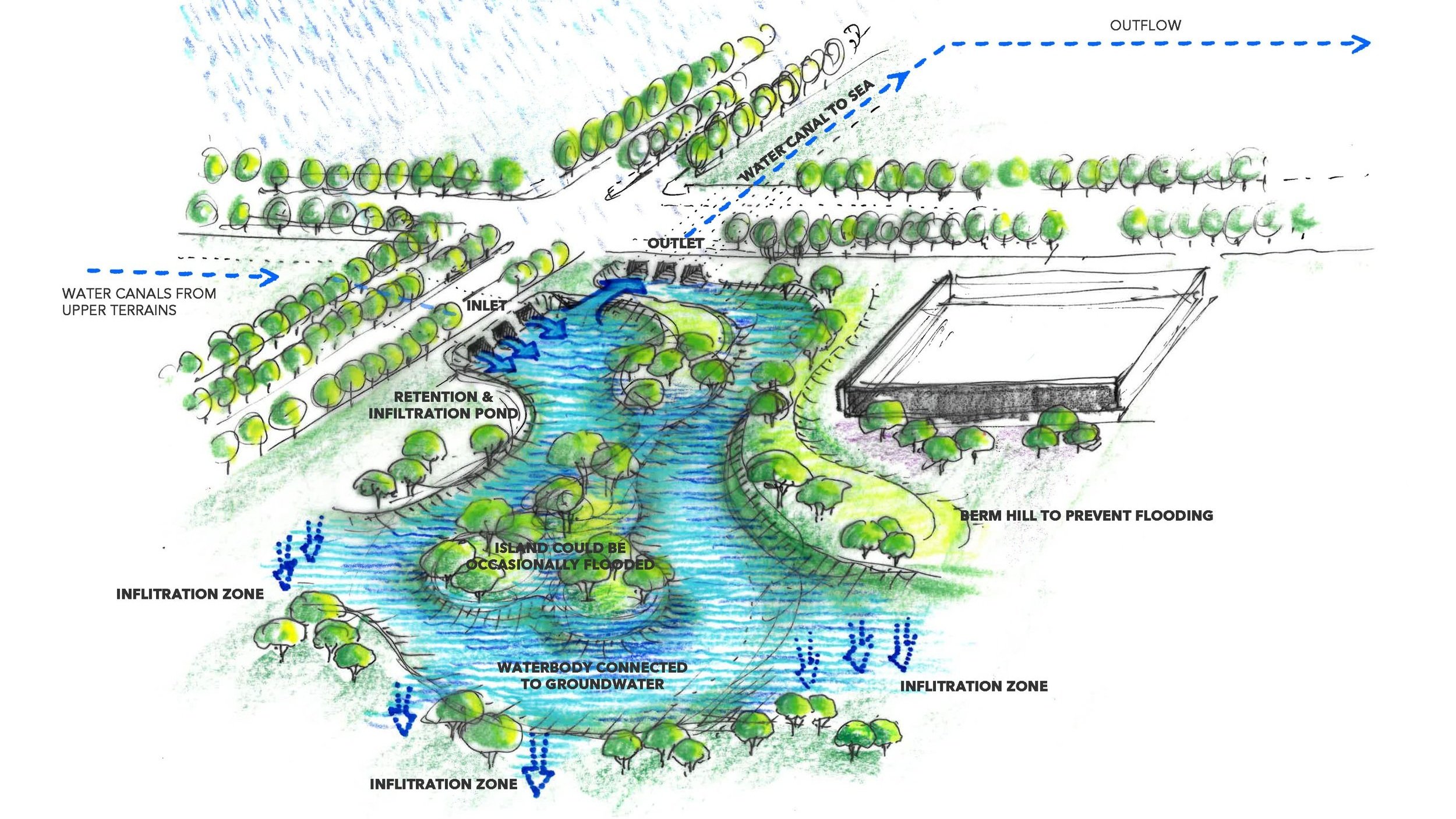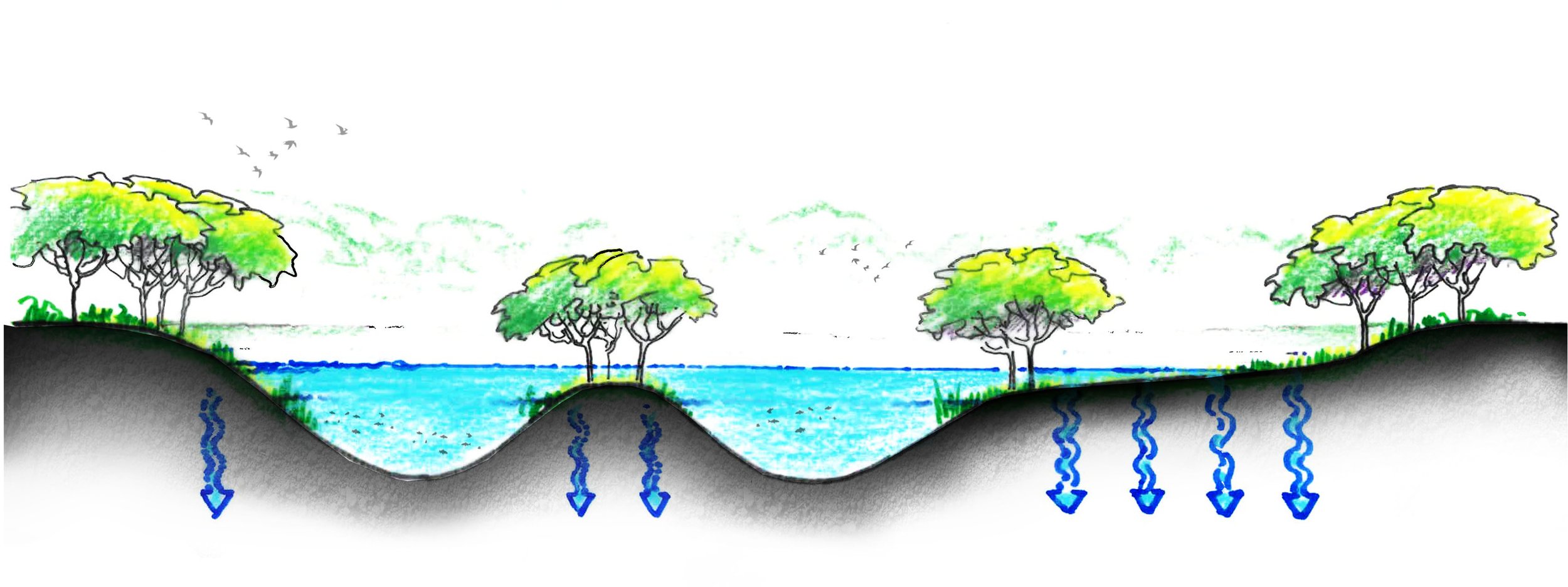
First-of-its-kind pond to enhance flood resilience against extreme storm
The vastness of the industrial landscape – conditions are extremely perfect for infiltration and it is an opportunity to combat climate change and for biodiversity to be establish and thrive. Navigating through the dynamic industrial landscapes deepens one understanding of the flow of water and to incoporate blue-green infrastructure to derive a first-of-its-kind pond on Jurong Island
According to the Centre for Climate Research Singapore, the city has experienced a consistent yearly increase in rainfall, with an average growth of 67mm per decade from 1980 to 2019. This trend is expected to lead to more frequent and severe rainstorms due to climate change. In response to this, Singapore has implemented a stormwater management strategy that encompasses ensuring proper drainage for new developments, ongoing drainage enhancements, and the implementation of flood protection measures.
Jurong Island, a Singaporean location with low-lying areas and coastlines, plays a vital role in housing critical infrastructure essential for the nation's energy security and economy. Consequently, JTC conducted a pilot project on the island, focusing on a nature-based solution to bolster resilience against the anticipated increase in intensity and frequency of storms linked to climate change. This project involves creating a pond over an area of approximately 8.9 hectares, equivalent to the size of 17 football fields, which leverages the existing ground conditions to enhance flood resilience.
DREISEITLconsulting GmbH
Conceptual & Artistic Design, Nature Based Solutions, Rainwater Management, Workshop, Civic Participation, Water Sensitive Urban Design, Blue-Green Infrastructure
Location
Jurong Island, Singapore
Client
JTC Corporation (JTC)
Collaborators
Government Agencies: JTC, NParks, PUB, ENC, LPD, RD and FED.
Timeline
2019 - 2022
Status
Completed
Our on-site experience, which involved studying specific vegetation species and navigating the inlet-outlet areas of the sea, provided us with a more profound and precise comprehension of water flow dynamics. This, in turn, informed our ability to effectively integrate blue-green infrastructure on Jurong Island.

In 2019, we organized and conducted a workshop involving a team of experts and stakeholders to explore the design concepts and evolution of Jurong Island Pond. The experts were divided into two groups: the "Blue" team concentrated on aspects like hydrology calculations, water systems, flow dynamics, and principles, while the "Green" team was primarily engaged in shaping the pond's profiles and creating habitats for biodiversity, including various species.

The pond also presents an opportunity to introduce additional green areas and enhance biodiversity on Jurong Island. This, in turn, serves to reduce the urban heat island effect, enhance the aesthetics of the landscape, and make the island more appealing and accommodating to businesses operating there.
With the support of the National Parks Board (NParks), over 1,500 trees and 25,000 shrubs, flowers, and various wetland plants have been strategically planted in and around the pond. The self-regulating feature of the pond means that, in periods of low rainfall, the pond's water can be utilized to irrigate the trees on Jurong Island. Consequently, the pond can provide water for the vegetation and wildlife both within and surrounding the pond.
The Jurong Island pond has the capacity to store a maximum of 125,000 cubic meters of rainwater, equivalent to the volume of 50 Olympic-sized swimming pools. This pond is situated above an underground layer of permeable sand called an aquifer.
Following a rainstorm, the pond gradually allows rainwater to infiltrate its porous base, which then accumulates in the aquifer. Eventually, this water naturally flows into the surrounding seas. Once the pond is emptied, it can be refilled with rainwater.
This system enhances the area's ability to manage stormwater, reducing the risk of flooding caused by the more frequent and intense rainfall events associated with climate change.
Capturing and storing water in the pond will help mitigate flooding, promote percolation and groundwater recharging, and reduce environmental temperature.





